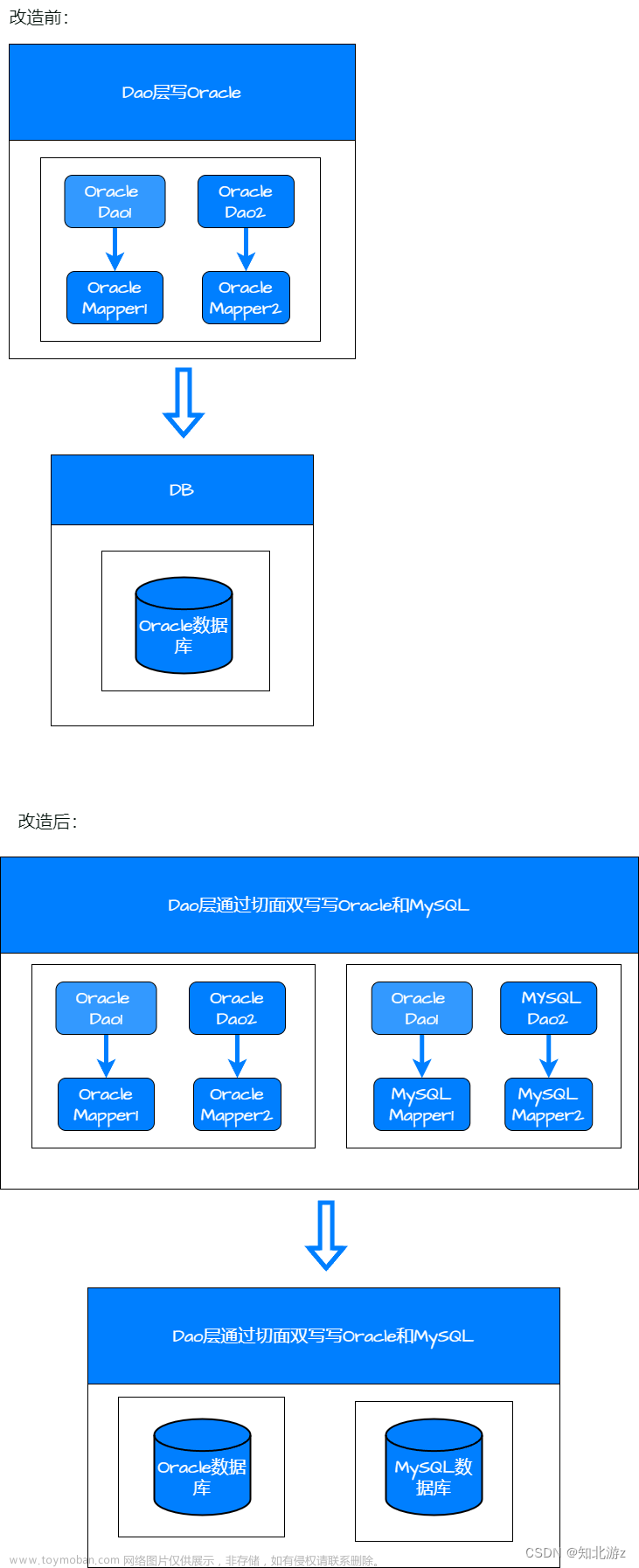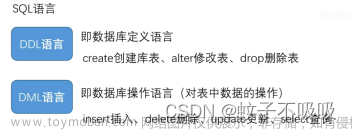概述
异构数据库的迁移(譬如从Oracle迁移到PostgreSQL)工作主要包括三个方面,
- 数据库对象的迁移,包括库、模式、表、索引、视图、触发器、存储过程等等;
- 数据内容的迁移,主要指的是数据表中的数据;
- 数据应用的迁移,主要指的是应用中SQL语句的迁移。
目前对于数据库对象以及数据内容的迁移有很多成熟的工具,而对于应用迁移的工具却很少能够见到。原因是因为DML语句比DDL复杂的多,不同的数据库语法差异也比较大。目前市场上的迁移工具大多使用正则表达式来解析SQL语句,而DML语句的复杂性导致此类工具的解析成功率较低,难以作为一个成熟地商业产品进行推广。
PawSQL团队开发的DML语法转换工具Ora2pg,通过PawSQL强大的SQLParser,能够解析几乎所有的Oracle语法,并将其转换为对应的PostgreSQL语法,支持数据库应用的平滑迁移。
本手册介绍了Oracle和PostgreSQL的语法区别,以及转换映射关系,可以作为迁移人员的SQL迁移参考手册。
本手册描述了PawSQL Ora2pg内部的实现逻辑,PawSQL Ora2pg能够帮助SQL迁移人员自动识别不兼容的语法,并完成语法转换。
虚拟表(dual)
虚拟表dual
Oracle获取一个常量需要通过一个dual,PostgreSQL不需要
| 编号 | Oracle | PostgreSQL |
|---|---|---|
| 1 | select 2 from dual | select 2 |
虚拟列
虚拟列rownum
对于查询返回的每行数据,rownum虚拟列会返回一个数字,第一行的ROWNUM为1,第二行为2,以此类推。
- rownum在select列表中时重写为row_number() over ()
- rownum在where子句中时重写为limit… offset…
| 编号 | Oracle | PostgreSQL |
| ---- | ------------------------------------------------------------ | ------------------------------------------------------------ |
| 1 | select rownum from customer; | select row_number() over () as rownum from customer |
| 2 | select tableoid from customer where rownum < 10 and rownum >= 2; | select tableoid from customer limit 9 OFFSET 2 |
| 3 | select c_name from customer where rownum < 10 and c_phone = ‘111’; | select customer.c_name from customer where customer.c_phone = ‘111’ limit 9 |
| 4 | select * from customer where rownum between 1 and 10; | select tableoid from customer limit 10 OFFSET 0 |
虚拟列rowid
Oracle中的rowid虚拟列返回特定行的具体地址,在PostgreSQL中重写为tableoid || '#' || ctid
| 编号 | Oracle | PostgreSQL |
|---|---|---|
| 1 | select rowid, c.* from customer c; | select tableoid || ‘#’ || ctid, c.* from customer as c |
字符串函数
nvl(col, value)
Oracle中的nvl(col, value)用来设置默认值,col为空就设置为value;
在PostgreSQL中重写为coalesce
| 编号 | Oracle | PostgreSQL |
|---|---|---|
| 1 | select nvl(c_phone, 1) from customer; | select coalesce(customer.c_phone, ‘1’) from customer |
nvl2(col, v1, v2)
nvl2对col的null值进行处理,如果col为null,则返回v1, 否则返回v2;
postgre中没有类似的函数,可以重写为case… when…
| 编号 | Oracle | PostgreSQL |
|---|---|---|
| 1 | select nvl2(c_phone, 1, 2) from customer; | select case when c_phone is null then 1 else 2 end from customer |
decode(arg1, arg2, arg3, arg4)
Oracle中的decode(arg1, arg2, arg3, arg4)函数, 表示当 arg1 等于 arg2 时,取 arg3,否则取 arg4。
postgre中没有类似的函数,可以重写为case… when…
| 编号 | Oracle | PostgreSQL |
|---|---|---|
| 1 | select decode(c_phone,‘110’, 1 , 2) from customer; | select case when c_phone = ‘110’ then 1 else 2 end from customer |
| 2 | select decode(c_phone,null, 1 , 2) from customer; | select case when c_phone is null then 1 else 2 end from customer |
substr(str, int, int)
Oracle中的substr用来取一个字符串的子串,PostgreSQL有同名的函数实现类似功能。不同的是Oracle中,第二、第三个参数可以为负数,代表从后面进行计数,PostgreSQL不允许其为负数,需对其进行转换。Oracle中是以0开始计数,PostgreSQL以1开始计数(需确认)。
| 编号 | Oracle | PostgreSQL |
|---|---|---|
| 1 | select substr(c_phone, 1 , -2 ) from customer; | select substr(c_phone, 1, length(c_phone) - 2) from customer |
| 2 | select substr(c_phone, -3 , 1 ) from customer; | select substr(c_phone, length(c_phone) - 3, 1) from customer |
instr(str1, str2)
Oracle中的instr用来取一个字符串的子串位置,当其只有两个参数时,表示子串的第一次出现的位置,和PostgreSQL中对应的函数为strpos。当其有多个参数时,无对应函数。
| 编号 | Oracle | PostgreSQL |
|---|---|---|
| 1 | select instr(‘123’, ‘23’) | select strpos(‘123’, ‘23’) |
replace(srcstr, oldsub[, newsub ])
在Oracle中,replace()函数用于替换字符串, replace(srcstr, oldsub[, newsub ] ),和PostgreSQL中的replace函数用法基本一致。只是需要注意在Oracle中无第三个参数时,代表删除此字符,在PostgreSQL可将第三个参数设置为’'。
| 编号 | Oracle | PostgreSQL |
|---|---|---|
| 1 | select replace(‘123’,‘1’); | select replace(‘123’,‘1’,‘’); |
stragg(str,[str])
Oracle里的stragg函数实现在分组内对列值的拼接,它和listagg类似,但是不可以指定拼接的顺序。在PostgreSQL中,可以使用string_agg函数来替换。其第二个参数可选,默认值为’',在PostgreSQL需补充第二个参数。
| 编号 | Oracle | PostgreSQL |
|---|---|---|
| 1 | select listagg(c_name,‘,’) as name from customer group by c_phone | select string_agg(c_name,‘,’) as name from customer group by c_phone |
| 2 | select listagg(c_name) as name from customer group by c_phone | select listagg(c_name,‘’) as name from customer group by c_phone |
listagg(str, [str])
Oracle里的listagg函数实现对列值的拼接,它可以在分组内以指定顺序对非分组列进行拼接。在PostgreSQL中,可以使用string_agg函数来实现,需注意语法方面也有区别. 另外,其第二个参数可选,默认值为’',在PostgreSQL需补充第二个参数。
-
当没有group by子句时,可以使用over(partiton by… order by…)进行替换
-
当指定group by子句时,它的重写算法比较复杂
- 如果需要保持拼接的顺序,需要通过子查询来实现(见编号2)
- 如果不需要保持拼接顺序,可以把它转化为简单的聚集函数(编号3)
| 编号 | Oracle | PostgreSQL |
|---|---|---|
| 1 | select listagg(c_name,‘,’) within group(order by c_name) over (partition by c_phone) as name from customer; | sselect string_agg(customer.c_name, ‘,’) over (partition by customer.c_phone order by c_custkey) as name from customer |
| 2 | select listagg(c_name,‘,’) within group(order by c_name) as name from customer group by c_phone; | select max(paw_dt.name) as name from (select string_agg(customer.c_name, ‘,’) over (partition by customer.c_phone order by c_name) as name, customer.c_phone from customer) as paw_dt group by c_phone |
| 3 | select listagg(c_name,‘,’) within group(order by c_name) as name from customer group by c_phone | select string_agg(c_name,‘,’) as name from customer group by c_phone |
日期函数
sysdate/systimestamp
Oracle中的sysdate()/sysdate返回系统当前时间(日期+时分秒),在PostgreSQL中对应now()或是current_timestamp(日期+时分秒+毫秒)。
Oracle中的systimestamp返回系统当前时间戳(日期+时分秒+毫秒),在PostgreSQL中对应now()或是current_timestamp。
| 编号 | Oracle | PostgreSQL |
|---|---|---|
| 1 | select sysdate | select current_timestamp |
| 2 | select sysdate() | select now() |
| 3 | select systimestamp | select current_timestamp |
to_date(str, fmt)
Oracle中的to_date返回的是时间类型,而在PostgreSQL中to_date是日期类型,所以Oracle中的to_date在PostgreSQL中应该对应to_timestamp
| 编号 | Oracle | PostgreSQL |
|---|---|---|
| 1 | select to_date( endTime ,‘yyyy-mm-dd hh24:mi:ss’) from t | select to_timestamp( endTime ,‘yyyy-mm-dd hh24:mi:ss’) from t |
trunc(arg1, [arg2])
在Oracle中trunc函数有两种用法
-
第一种是对数字进行截取, trunc(num,[int]); 是去掉数字num小数位以后的部分,并且不进行四舍五入。这种用法和在PostgreSQL的trunc用法一致,不需要转换
-
trunc函数的第二种用法是对日期进行提取,trunc(date,[fmt])。这种用法在PostgreSQL对应的函数是date_trunc(fmt, date),需注意在PostgreSQL中fmt是第一个参数,且不可省略。
| 编号 | Oracle | PostgreSQL |
|---|---|---|
| 1 | select trunc( 111.23,2) | select trunc( 111.23,2) |
| 2 | select trunc(sysdate,‘year’) | select date_trunc(‘year’, current_timestamp) |
| 3 | select trunc(sysdate) | select date_trunc(‘dd’, current_timestamp) |
add_months(date, int)
Oracle中的add_months 函数主要是对日期函数进行操作,对日期按月增加。在PostgreSQL没有对应的函数,需将其转化为基于日期和interval的运算。
| 编号 | Oracle | PostgreSQL |
|---|---|---|
| 1 | select add_months(sysdate, 2) | select current_timestamp + 2 * interval ‘1 month’ |
last_day(date)
Oracle中的last_day返回指定日期所在月份的最后一天; 在PostgreSQL没有对应的函数,需将其转化为基于日期和interval的运算。
| 编号 | Oracle | PostgreSQL |
|---|---|---|
| 1 | select add_months(sysdate, 2) | select cast(date_trunc(‘MONTH’, current_timestamp) + interval ‘1 MONTH - 1 DAY’ as date) |
SQL语句
HAVING子句顺序
Oracle允许HAVING在GROUP BY子句之前或之后。在PostgreSQL中,HAVING子句必须出现在GROUP BY子句后面。
| 编号 | Oracle | PostgreSQL |
|---|---|---|
| 1 | select c_name from customer having count(*) > 2 group by c_name | select c_name from customer group by c_name having count(*) > 2 |
括号中的表名
Oracle中单表引用允许使用括号括起来,PostgreSQL不允许。
| 编号 | Oracle | PostgreSQL |
|---|---|---|
| 1 | SELECT * FROM (CUSTOMER); | SELECT * FROM CUSTOMER; |
UNIQUE关键字
Oracle中允许使用UNIQUE进行去重,在PostgreSQL中迁移为DISTINCT关键字
| 编号 | Oracle | PostgreSQL |
|---|---|---|
| 1 | select unique c_phone from customer | select distinct customer.c_phone from customer |
MINUS关键字
Oracle中可以使用minus关键字来取两个结果集的差,在PostgreSQL中需迁移为except.
| 编号 | Oracle | PostgreSQL |
|---|---|---|
| 1 | select c_custkey from customer minus select o_custkey from orders | select c_custkey from customer except select o_custkey from orders |
FROM关键字
Oracle的delete语句的FROM关键字可以省略,迁移至PostgreSQL需补充上。
| 编号 | Oracle | PostgreSQL |
|---|---|---|
| 1 | delete customer where 1=0; | delete from customer where 1 = 0 |
NOLOGGING关键字
Oracle在执行INSERT语句时,可以通过指定NOLOGGING关键字来减少日志记录,提升操作性能。PostgreSQL不支持此关键字。
| 编号 | Oracle | PostgreSQL |
|---|---|---|
| 1 | insert into customer nologging select * from customer_bk; | insert into customer select * from customer_bk; |
AS关键字
INSERT INTO 后面不需要添加as关键字,insert into ... as select... 修改为insert into... select...
| 编号 | Oracle | PostgreSQL |
|---|---|---|
| 1 | insert into t as select c1 from t1 | insert into t select c1 from t1 |
FROM子查询的别名
Oracle中在不引起歧义的情况下子查询可以不带别名,而在PostgreSQL中,所有的FROM子查询都必须带有别名
| 编号 | Oracle | PostgreSQL |
|---|---|---|
| 1 | select * from (select * from CUSTOMER) | select * from (select * from CUSTOMER) as foo |
UPDATE语句里的字段名
在PostgreSQL中,Update的时候,更新列不允许添加表名前缀。
| 编号 | Oracle | PostgreSQL |
|---|---|---|
| 1 | update customer c set c.c_name = ‘xxx’ where c_custkey = 1; | update customer set c_name = ‘xxx’ where c_custkey = 1 |
左(右)外连接
在Oracle中,外连接可以通过在条件上添加(+)来定义, 连接符(+)跟在哪个条件后面就是哪张表被左连。在PostgreSQL中,需将其重写为标准的外连接语法。
| 编号 | Oracle | PostgreSQL |
|---|---|---|
| 1 | select * from customer, orders where c_custkey = o_custkey(+) | select * from customer left outer join orders on c_custkey = o_custkey |
| 2 | select * from customer, orders where c_custkey(+) = o_custkey and c_name(+) = o.o_clerk and o_custkey>100 | select * fromcustomer right outer join orders on (c_custkey = o_custkey and c_name = o_clerk) where o_custkey > 100 |
CONNECT BY子句
Oracle中,CONNECT BY 用于存在上下级等层级关系的数据表进行递归查询。语法格式: START WITH condition1 CONNECT BY [ NOCYCLE ] condition2。在PostgreSQL通过Recursive Common Table Expression来实现此功能,主要是把START WITH… CONNECT BY Prior拆成两个部分,查询表一致,但条件不一致,用UNION ALL合并.
| 编号 | Oracle | PostgreSQL |
|---|---|---|
| 1 | select id from city_branch start with id=1 connect by prior id=parent_id; | with RECURSIVE MIG_CTE as ( select id, 1 as level from city_branch where id = 1 union all select id, level + 1 from city_branch, MIG_CTE where MIG_CTE.id = parent_id) select * from MIG_CTE |
| 2 | select t.branch_level, t.id from city_branch c where (c.branch_level = ‘1’ or t.branch_level = ‘2’) and (t.sign = ‘1’ or t.sign = ‘4’ or t.sign = ‘8’) and t.status = ‘1’ start with c.id = 1 connect by c.id = prior c.parent_id order by c.branch_level desc | with RECURSIVE MIG_CTE as (select t.branch_level, t.id, 1 as level from city_branch as cwhere ((((branch_level = ‘1’ or t.branch_level = ‘2’)and ((t.sign = ‘1’ or t.sign = ‘4’) or t.sign = ‘8’)) and t.status = ‘1’) and c.id = 1) union all select t.branch_level, t.id, level + 1 from city_branch as c, MIG_CTE where ((((branch_level = ‘1’ or t.branch_level = ‘2’) and ((t.sign = ‘1’ or t.sign = ‘4’) or t.sign = ‘8’)) and t.status = ‘1’) and c.id = MIG_CTE.parent_id)) select * from MIG_CTE order by MIG_CTE.branch_level desc |
操作符的强类型限制
Oracle中不同类型进行基于操作符的运算,会自动转化类型,譬如select 1 + '1' from dual。PostgreSQL是强类型,不同类型的运算会提示类型不匹配,执行select 1 + '1'会报错,需要进行显式的类型转换。
涉及的操作符类型包括:
| 操作符 | 操作符名称 |
|---|---|
| + | 加法 |
| - | 减法 |
| / | 除法 |
| % | 取余 |
| * | 乘法 |
| || | 字符串拼接 |
数值运算(+,-,*,/,%)
| 编号 | Oracle | PostgreSQL |
|---|---|---|
| 1 | select 1 + ‘1’ | select 1 + 1 |
| 2 | select 1 + charCol from tbl | select 1 + cast(charCol as numeric) from tbl |
| 3 | select ‘1’ - 1 | select 1- 1 |
| 4 | select 1 * charCol from tbl | select 1 * **cast(charCol as numeric) ** from tbl |
| 5 | select 1 / charCol from tbl | select 1 /cast(charCol as numeric) from tbl |
| 6 | select charCol % 2 from tbl | select cast(charCol as numeric) % 2 from tbl |
日期计算(+,-)
| 编号 | Oracle | PostgreSQL |
|---|---|---|
| 1 | select sysdate - 1 | select current_timestamp - interval ‘1’ DAY |
| 2 | select 1 + sysdate() | select interval ‘1’ DAY + now() |
| 3 | select systimestamp +1 | select current_timestamp + interval ‘1’ DAY |
| 4 | select systimestamp - 1 | select current_timestamp - interval ‘1’ DAY |
字符串拼接(||)
| 编号 | Oracle | PostgreSQL |
|---|---|---|
| 1 | select 1||1 | select ‘1’||‘1’ |
| 2 | select 1 || c_custkey | select 1 || cast(c_custkey as text) |
函数参数的强类型限制
Oracle中在函数调用时,参数类型进行会自动转化类型,譬如 select substr(123.12,0,2)是合法的,且返回123。PostgreSQL是强类型, 执行select substr(123.12,0,2)会报错,需要进行显式的类型转换。
substr(arg1, arg2, arg3)
| 编号 | Oracle | PostgreSQL |
|---|---|---|
| 1 | select substr(1234.1, 0, 4) | select substr(‘1234.1’, 1, 4+1) |
| 2 | select substr(‘1234.1’, 0, ‘2’) | select substr(‘1234.1’, 0, 2) |
sum(arg)
| 编号 | Oracle | PostgreSQL |
|---|---|---|
| 1 | select sum(‘2’) | select sum(2) |
avg(arg)
| 编号 | Oracle | PostgreSQL |
|---|---|---|
| 1 | select avg(‘2’) | select avg(2) |
round(arg)
| 编号 | Oracle | PostgreSQL |
|---|---|---|
| 1 | select round(‘2’) | select round(2) |
条件判断中的强类型限制
Oracle中在进行条件判断时,左右表达式的类型进行会自动转化,譬如 where c_phone = 110是合法的。PostgreSQL是强类型, 执行where c_phone = 110会报错,需要进行显式的类型转换。
比较运算(=、>、<、>=、<=、<>)
转换原则,优先转换常量类型;当两个都为数据列时,优先转换左边的。
| 编号 | Oracle | PostgreSQL |
|---|---|---|
| 1 | select * from customer where c_phone = 110 | select * from customer where c_phone = ‘110’ |
| 2 | select * from customer where ‘1’ = c_custkey | select * from customer where 1 = c_custkey |
| 3 | select * from customer where c_phone = c_custkey | select * from customer where cast(c_phone as int) = c_custkey |
BETWEEN
转换原则,转换 var0 between var1 and var2 中的 var1, var2。
| 编号 | Oracle | PostgreSQL |
|---|---|---|
| 1 | select * from customer where c_custkey between ‘100’ and ‘200’; | select * from customer where c_custkey between 100 and 200 |
IN LIST
转换原则,转换List中的变量。
| 编号 | Oracle | PostgreSQL |
|---|---|---|
| 1 | select * from customer where c_phone in (110,120); | select * from customer where c_phone in (‘110’, ‘120’) |
默认参数
Oracle中有部分函数存在默认参数,而在PostgreSQL其参数是必填项。
to_char(unknown)
| 编号 | Oracle | PostgreSQL |
|---|---|---|
| 1 | select to_char(c_custkey) from customer | select cast(c_custkey as text) from customer |
to_number(str)
| 编号 | Oracle | PostgreSQL |
|---|---|---|
| 1 | select to_number(‘100’) | select 100 |
| 2 | select to_number(c_phone) from customer; | select cast(c_phone as numeric) from customer |
PawSQL往期文章精选
从SQL质量管理体系来看SQL审核(3)- SQL开发规范
从SQL质量管理体系来看SQL审核(2)- SQL质量标准
高级SQL优化 | 你真的了解用UNION替换OR吗?
EverSQL向左,PawSQL向右
关于PawSQL
PawSQL专注数据库性能优化的自动化和智能化,支持MySQL,PostgreSQL,Opengauss等,提供的SQL优化产品包括:文章来源:https://www.toymoban.com/news/detail-844224.html
PawSQL Cloud,在线自动化SQL优化工具,支持SQL审查,智能查询重写、基于代价的索引推荐,适用于数据库管理员及数据应用开发人员,
PawSQL Advisor,IntelliJ 插件, 适用于数据应用开发人员,可以IDEA/DataGrip应用市场通过名称搜索“PawSQL Advisor”安装。文章来源地址https://www.toymoban.com/news/detail-844224.html
到了这里,关于Oracle到PostgreSQL数据库的语法迁移手册(建议收藏)的文章就介绍完了。如果您还想了解更多内容,请在右上角搜索TOY模板网以前的文章或继续浏览下面的相关文章,希望大家以后多多支持TOY模板网!








